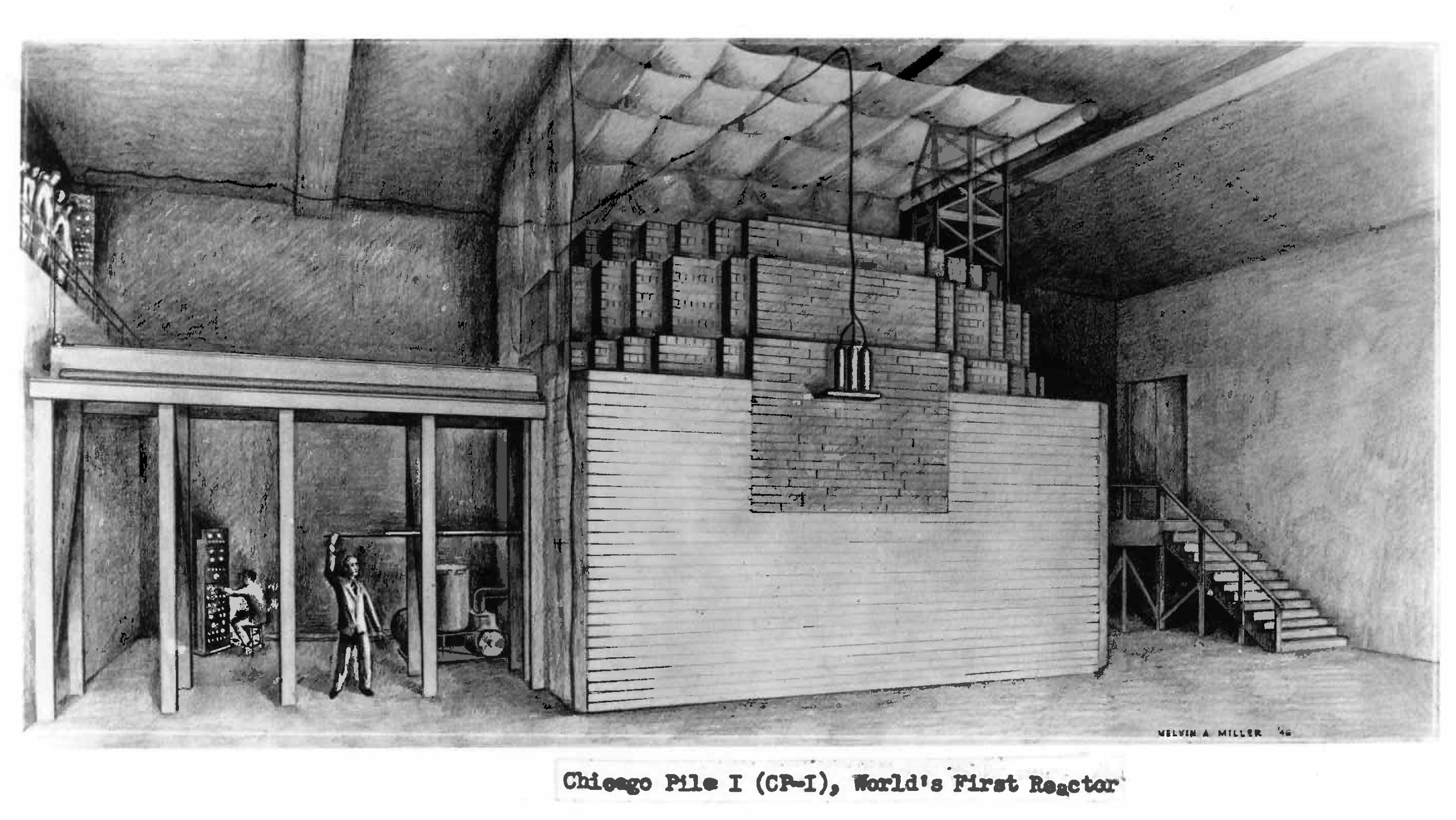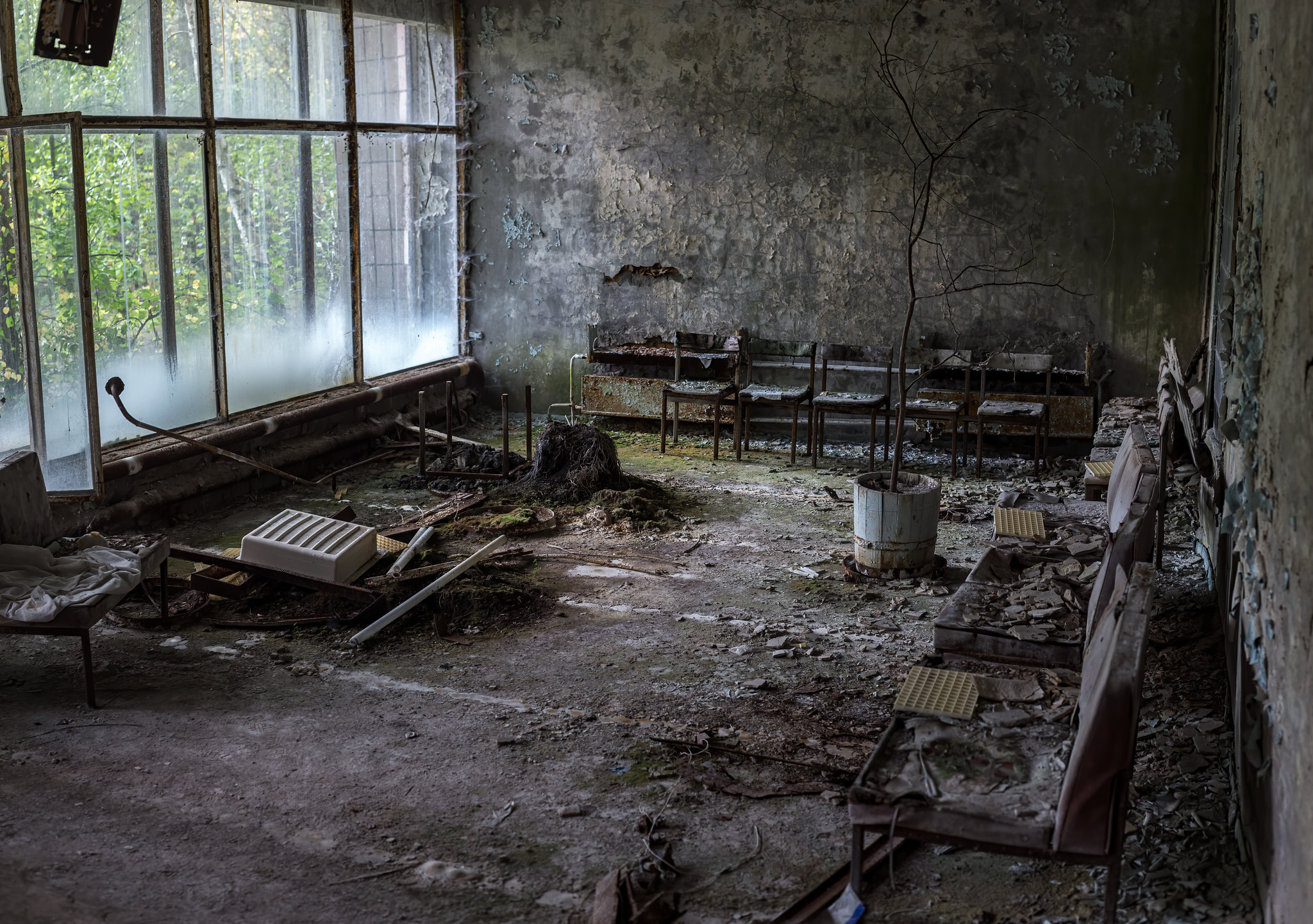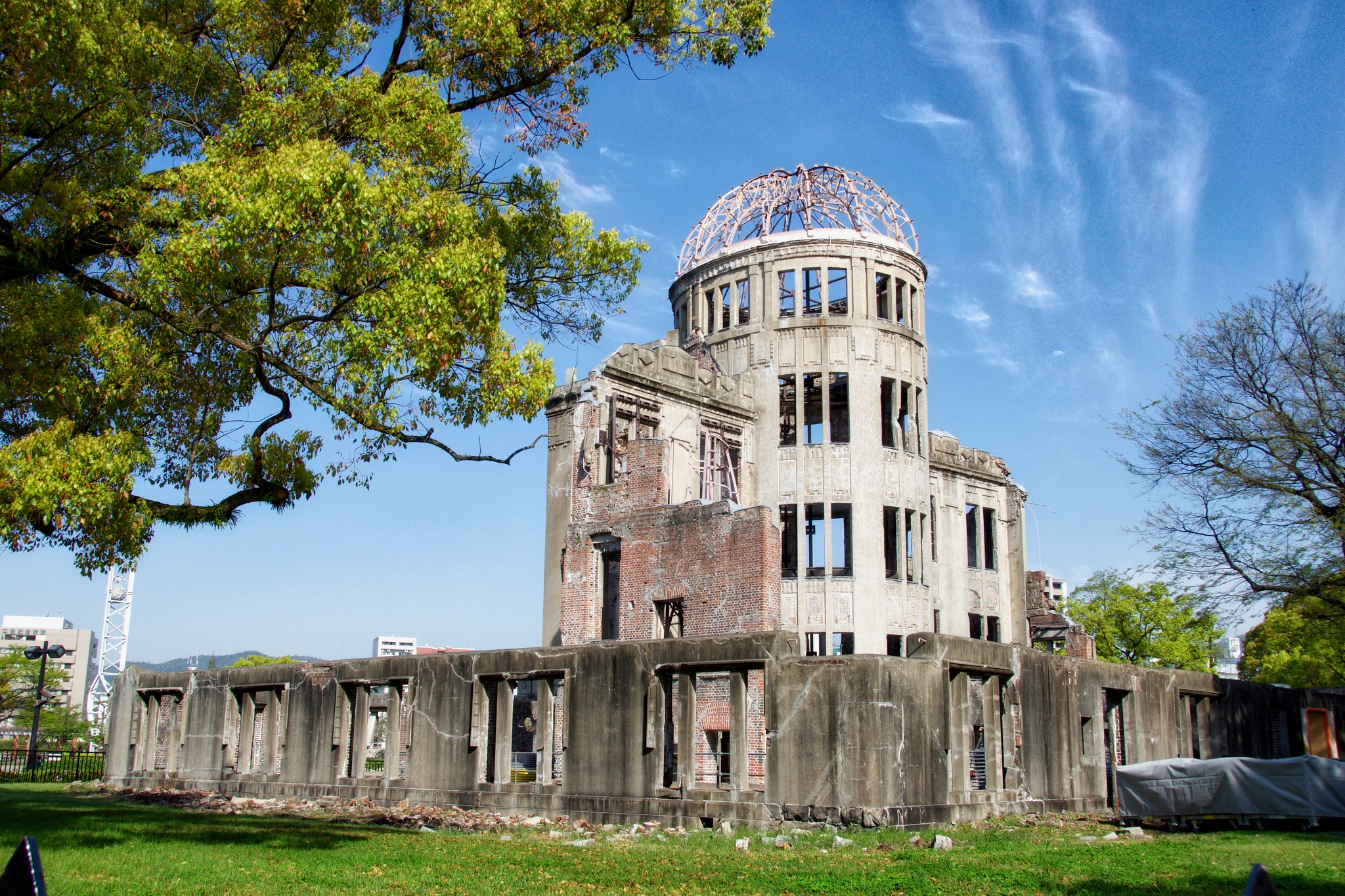Dawn of Nuclear Age: Enrico Fermi Conducts Nuclear Chain Reaction
In the hallowed halls of science, certain moments redefine the future, casting long shadows over the fabric of society. The historic day of December 2, 1942, stands as a testament to such a pivotal turn, when Enrico Fermi and his team masterminded the first controlled nuclear chain reaction at the University of Chicago. This breakthrough not only initiated the Nuclear Age but also unveiled a duality that would persistently challenge mankind: the promise of a boundless energy horizon and the specter of unprecedented destructive potential. Today, as global tensions echo the tremors of nuclear capability with incidents like the Zaporizhzhia nuclear power plant’s capture, Fermi’s legacy remains as relevant as ever. This essay journeys through the conception of the Nuclear Age, its transformative implications for both energy and warfare, the ensuing ethical debates, and the contemporary reflections of Fermi’s world-altering experiment.
Basic Description: The Dawn of the Nuclear Age
The successful execution of the first controlled nuclear chain reaction by Enrico Fermi and his team on December 2, 1942, at the University of Chicago, marked a turning point in modern history and science. This monumental event dawned the Nuclear Age, a period characterized by both immense potential and profound challenges. Fermi’s breakthrough laid the foundation for nuclear power and atomic weaponry, revolutionizing the fields of energy, medicine and military capabilities. The ability to harness the atom’s power represented a leap forward in human ingenuity and technological advancement, promising a new era of unprecedented possibilities. The world was poised on the brink of a future where the atom’s energy could either propel humanity to new heights or lead it into uncharted and perilous territories.
Background: The Path to the Chain Reaction
The quest for a controlled nuclear chain reaction began in the 1930s, following the discovery of nuclear fission. Enrico Fermi, an Italian-American physicist, was at the forefront of this research. The project, part of the larger Manhattan Project in the United States, aimed to harness the energy released from nuclear reactions for both energy production and military use.
The Experiment: Chicago Pile-1: Dawn of Nuclear Age

While Fermi’s experiment in 1942 opened up unparalleled pathways for energy and medicine, it also laid the groundwork for present-day geopolitical dynamics involving nuclear technology. The legacy of that first chain reaction continues to unfold in today’s complex international relations, where nuclear capability is a significant factor. The recent tensions surrounding the Zaporizhzhia Nuclear Power Plant (ZNPP) capture are a stark reminder of the ongoing relevance of Fermi’s discovery. The global community now stands at a crossroads where the stewardship of nuclear technology is as crucial as its innovation was over eight decades ago
Significance and Implications of Dawn of Nuclear Age:
Transforming Energy Production
The successful execution of the first controlled nuclear chain reaction by Enrico Fermi not only marked a significant scientific breakthrough but also heralded the birth of nuclear power. This innovation opened new avenues for generating electricity, promising a potent alternative to traditional energy sources and highlighting the atom’s capacity to significantly alter humanity’s energy landscape.
A New Era of Weaponry
Alongside the advancements in energy production, this technological leap facilitated the development of atomic weapons. The realization of nuclear armament capabilities changed the course of military strategy and international relations, most notably demonstrated by the atomic bombings of Hiroshima and Nagasaki during World War II. These events underscored the devastating power of nuclear technology, reshaping global political dynamics and the nature of warfare.
Raising Ethical and Moral Dilemmas
Fermi’s experiment also prompted a profound reevaluation of the ethical and moral implications of nuclear technology. The capacity to harness such immense power posed significant philosophical questions regarding its use, governance, and the long-term implications for humanity and the environment. These ethical considerations continue to influence debates on nuclear policy and the responsibilities of the scientific community in managing technologies with both beneficial and potentially catastrophic capabilities.
Impact on Fermi’s Legacy
Enrico Fermi, already a Nobel laureate, further cemented his status as one of the most influential physicists of the 20th century. His contributions to nuclear physics and the development of the first nuclear reactor had a lasting impact on science and technology.
Dawn of Nuclear Age: A Threat and An Opportunity
The duality of Enrico Fermi’s seminal work in triggering nuclear chain reactions encapsulates one of the most profound paradoxes of the 20th century, echoing into the present day. This groundbreaking scientific achievement carried the promise of boundless energy, laying down the foundations for nuclear power that could potentially illuminate cities and power industries without the carbon footprint of fossil fuels. Concurrently, it unveiled the specter of destruction, as evidenced by the atomic bombings and the looming threat of nuclear proliferation. The dichotomy of nuclear technology as both a harbinger of progress and a portent of peril presents an ongoing challenge. It forces the international community to confront ethical quandaries and to balance the quest for scientific advancement with the imperative of safeguarding human existence against the potential for irreversible devastation. The continued focus on nuclear safety, disarmament, and non-proliferation stands as a testament to the complexities introduced by the dawn of the Nuclear Age—a testament to Fermi’s legacy that continues to shape global policies and philosophies regarding the atom’s power.
Key Uses of Nuclear Chain Reaction:
While Nuclear Chain Reaction test that resulted into dawn of Nuclear Age has many uses where the discovery can help humanity the end result has been, at best, as good as bad. Here is the list of major uses of the technology:
1. Nuclear Power Generation:
One of the most significant applications of nuclear chain reactions is in the generation of electricity. Nuclear power plants use controlled chain reactions to produce heat, which is then used to generate steam that drives turbines to produce electricity. This form of energy production is known for its efficiency and for producing a large amount of energy with minimal environmental impact in terms of carbon emissions.
2. Medical Applications:
Nuclear technology, derived from chain reactions, plays a critical role in medicine. It is used in the diagnosis and treatment of various diseases. For example, radioactive isotopes produced by nuclear reactions are used in medical imaging techniques like PET scans, and in radiation therapy for treating cancer.
3. Scientific Research:
Nuclear chain reactions have opened up new avenues in scientific research. Nuclear reactors are used to produce isotopes for a wide range of applications, including in geology, archaeology, and environmental science. Additionally, they provide neutron sources for research in materials science and other fields.
4. Space Exploration:
Nuclear reactions provide a compact and reliable energy source for space missions, especially those traveling to distant planets. Radioisotope thermoelectric generators, which use the heat released by the decay of radioactive materials, have been used to power spacecraft and rovers, including the Mars rovers.
5. Industrial Applications:
In industries, nuclear technology is used for a variety of purposes, such as radiography to inspect welds and materials for integrity. It is also used in measuring instruments, like moisture-density gauges in construction and civil engineering.
6. National Defense:
The development of nuclear weapons is a well-known application of nuclear chain reactions. While this aspect is controversial due to the destructive potential of nuclear weapons, they have been a significant factor in international relations and military strategies since World War II.
7. Agricultural Applications:
Nuclear technology is used in agriculture for pest control, food preservation, and to produce high-yield and disease-resistant crops through radiation-induced mutations.
However, the tremendous benefits of nuclear technology come with formidable risks, evidenced by several catastrophic accidents that have occurred over the decades. The transition from nuclear power as a symbol of human progress to a harbinger of potential disaster is a journey marked by some of the most challenging moments in modern history. These incidents serve as somber lessons that the energy harnessing the very stars also holds the power to cause unprecedented destruction when not managed with the utmost care.
Major accidents Involving Nuclear Chain Reaction
1. Chernobyl Disaster (1986):
The Chernobyl disaster is arguably the most infamous nuclear accident in history. It occurred on April 26, 1986, at the Chernobyl Nuclear Power Plant in the Ukrainian SSR (now Ukraine). A catastrophic nuclear meltdown in one of the reactors led to a massive release of radioactive materials into the environment. This disaster had far-reaching effects on human health, leading to numerous cases of thyroid cancer, and necessitated the evacuation and resettlement of over 300,000 people. It also resulted in a vast exclusion zone around the plant, which remains in place.

Image: Hiroshima after 30 years. [Credit Flickr.com]
2. Fukushima Daiichi Nuclear Disaster (2011):
On March 11, 2011, a massive earthquake and subsequent tsunami struck Japan, leading to the Fukushima Daiichi nuclear disaster. The natural disaster caused a series of equipment failures, nuclear meltdowns, and releases of radioactive materials at the Fukushima Daiichi Nuclear Power Plant. It was the most severe nuclear accident since the Chernobyl disaster and led to the evacuation of approximately 154,000 residents from the surrounding areas.
3. Three Mile Island Accident (1979):
The Three Mile Island accident in the United States is considered the most significant accident in U.S. commercial nuclear power plant history. On March 28, 1979, a partial nuclear meltdown occurred in one of the reactors of the Three Mile Island Nuclear Generating Station in Pennsylvania. Though the radioactive release was small and had limited health effects, the incident had a profound impact on public opinion and policy regarding nuclear power in the United States.
4. SL-1 Reactor Accident (1961):
The SL-1, or Stationary Low-Power Reactor Number One, was a United States Army experimental nuclear power reactor in Idaho. On January 3, 1961, a control rod was removed too far from the reactor, causing a criticality accident and a steam explosion. Three operators were killed in this incident, marking the first fatal nuclear reactor accident in the U.S.
5. Kyshtym Disaster (1957):
The Kyshtym disaster was a radioactive contamination accident that occurred on September 29, 1957, at the Mayak Production Association, a plutonium production site for nuclear weapons and nuclear fuel reprocessing plant in the Soviet Union. Due to a failure in cooling systems, a storage tank containing highly radioactive waste exploded. This event led to the contamination of a vast area and the evacuation of thousands from their homes.
Challenges in Nuclear Waste Disposal:
1. Long-Term Radioactivity:
Spent nuclear fuel remains highly radioactive for thousands of years. This necessitates the development of disposal solutions that can safely contain the waste for extraordinarily long periods, far beyond typical engineering and planning timescales.
2. Safe and Secure Storage:
Finding secure and safe ways to store nuclear waste is a major challenge. The storage facilities must be robust enough to prevent leaks and withstand natural disasters, human error, and potential terrorist attacks.
3. Environmental Impact:
There is a risk of contamination of soil, water, and air if nuclear waste is not properly managed. This can have severe consequences for ecosystems and human health. The challenge is to minimize any environmental impact through careful site selection, construction, and management of waste storage facilities.
4. Transportation Risks:
Transporting nuclear waste to disposal or storage sites poses risks, including accidents or potential interception by hostile entities. Ensuring safe transportation is a logistical and security challenge.
5. Political and Public Opposition:
Many communities and political groups oppose the creation of nuclear waste storage facilities near their localities, a phenomenon known as “NIMBY” (Not In My Back Yard). Public concerns about safety and environmental impact create political and social hurdles in site selection and facility development.
6. Long-Term Monitoring and Maintenance:
Nuclear waste disposal sites require long-term monitoring and maintenance to ensure their integrity and safety. This poses administrative and financial challenges, as the facilities need to be overseen for durations that exceed conventional institutional lifespans.
7. International and Regulatory Challenges:
There is a need for international cooperation and agreement on the handling of nuclear waste, particularly in regions where multiple countries may be affected. Additionally, developing and enforcing stringent regulatory standards is essential for safe waste management.
8. Cost:
The construction, maintenance, and monitoring of nuclear waste disposal facilities entail significant costs. Funding these activities sustainably and equitably is a major challenge for governments and nuclear facility operators.
9. Technological Development:
Advancements in nuclear waste processing and disposal technologies are needed to make the handling of nuclear waste safer and more efficient. Research in areas such as waste reprocessing, advanced containment materials, and alternative disposal methods is ongoing but presents its own set of challenges.
Global Impact of Nuclear Waste Mismanagement
Cross-Border Environmental Risks
Improper disposal of nuclear waste can lead to transboundary environmental contamination. Radioactive materials that seep into ecosystems affect far-flung regions, causing soil and water pollution that neighboring countries, particularly those with limited resources, struggle to mitigate.
Health Hazards in Resource-Poor Nations
Countries with less developed healthcare systems face heightened health risks due to exposure to radioactive waste. The resulting increase in cancer and genetic mutations places a heavy burden on already strained healthcare infrastructures.
Economic Consequences for Developing Regions
Radioactive pollution threatens the economies of areas reliant on agriculture and fisheries. Contamination can render the land barren and water bodies toxic, leading to job losses and economic hardship for communities dependent on these natural resources.
Technical and Resource Gaps
Many countries lack the expertise and resources needed for effective monitoring and management of radioactive contamination. This limitation hinders their ability to perform risk assessments, protective measures, and necessary cleanup activities.
Diplomatic Power Imbalance
Developed nations often dominate international forums, making it challenging for less affluent countries to voice their concerns and push for responsible waste management practices.
Emergency Response Disparities
In the aftermath of a nuclear accident, the stark difference in emergency response capabilities becomes evident. Poorer nations, without the necessary infrastructure or expertise, can become overwhelmed, leaving their populations vulnerable.
Energy Dependency
Less developed nations may depend on richer countries for energy resources, including nuclear power. This reliance can stifle their ability to challenge irresponsible nuclear waste disposal practices for fear of compromising their energy supply.
Political and Economic Repercussions
When less developed nations challenge the disposal practices of wealthier countries, they can face diplomatic and economic repercussions, complicating international relations and potentially affecting their own economic stability.
Information Asymmetry and Transparency Issues
There’s often a lack of clear information about the practices of nuclear waste disposal by developed nations. Without accurate data, poorer countries find it difficult to assess risks and formulate appropriate response strategies.
political pressure or economic repercussions if they object to the activities of more powerful nations.
Consclusions:
Enrico Fermi’s experiment, which heralded the Nuclear Age, has since unfurled a complex tapestry interwoven with achievements and admonitions. The atom, once split, offered a beacon of progress in energy and medicine yet simultaneously unveiled a Pandora’s box of military might and moral dilemmas. As the current geopolitical climate continues to grapple with the dual nature of nuclear technology, the discourse on its management remains at the forefront. Looking back over eighty years, the narrative of nuclear technology has been marked by contrasts—its ability to forge paths out of poverty and disease, counterpoised with the looming risk of annihilation. In this age where the power to illuminate and obliterate rests at humanity’s fingertips, the lessons of the past underscore an urgent call for responsible stewardship and collective wisdom in harnessing the atom’s might for the betterment of all.
Feature Image: Click here to view image. [Credit https://Flickr.com]
